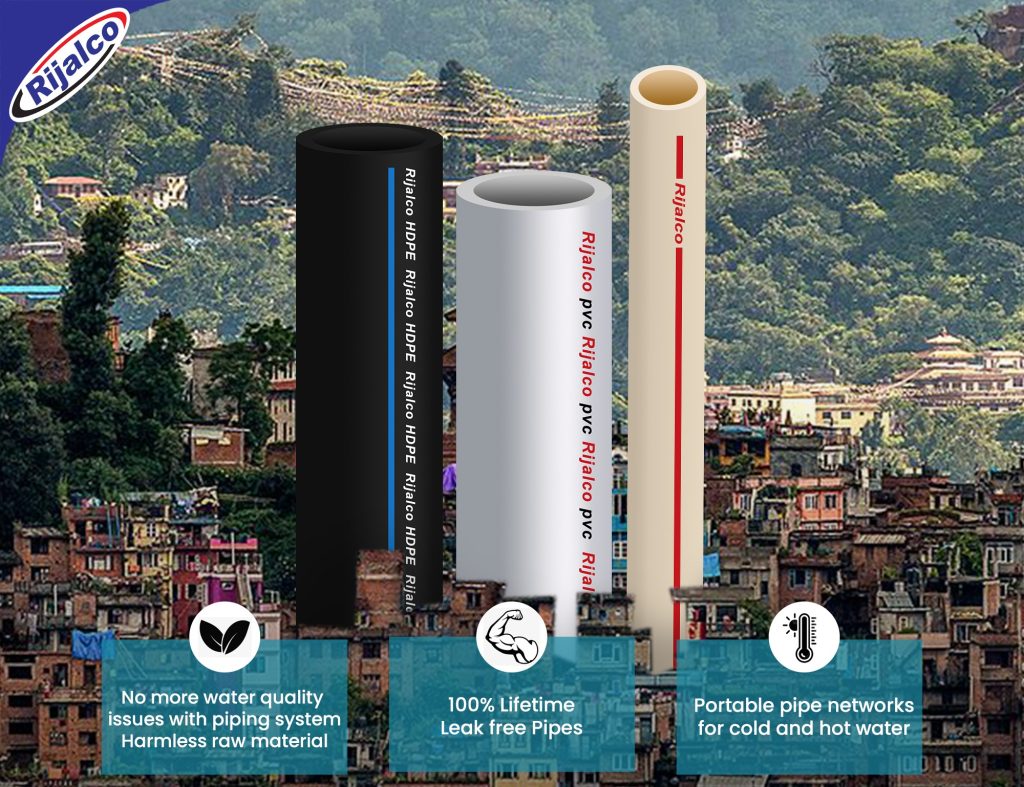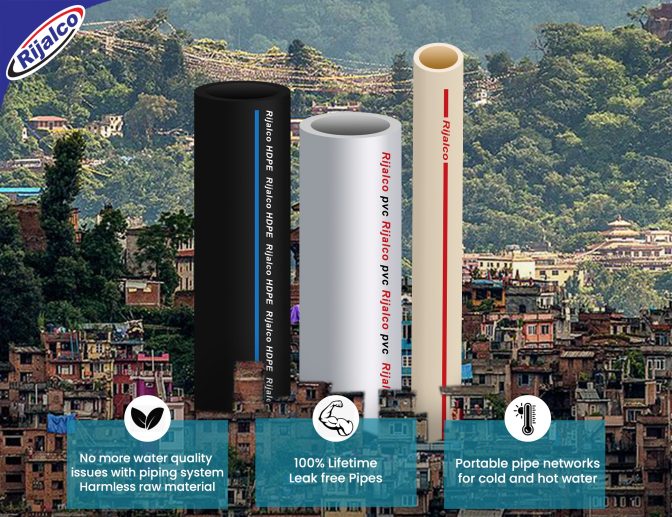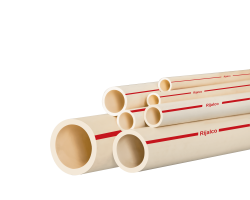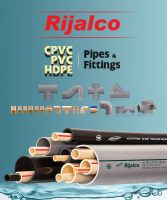Frequently Asked Questions of Rijalco PVC, CPVC, HDPE Pipes.
1.What is Rijalco PVC pipe?
Polyvinyl chloride is used to create PVC pipe, a form of plastic pipe. It is frequently used for a variety of tasks, such as electrical wiring, plumbing, irrigation, and drainage
2. What is a Rijalco CPVC pipe?
CPVC pipe is a PVC pipe variant that has been chlorinated to strengthen its resistance to pressure and temperature. Given its ability to can withstand higher temperatures than standard PVC pipes, it is commonly employed for hot water supply lines.
3. Describe the Rijalco HDPE pipe.
High-density polyethylene is the material used to make Rijalco HDPE pipe, a form of plastic pipe. It is renowned for its capacity to stand up to chemicals, strength, and durability. In underground gas distribution, drainage, and water supply systems, HDPE pipes are frequently used.
4. What advantages are Rijalco PVC pipes?
PVC pipes have a high level of resistance are lightweight, and are simple to install. They have a lengthy lifespan and are very affordable. PVC pipes come in a variety of sizes & are capable of handling a wide range of pressures and temperatures.
5. What advantages of Rijalco CPVC pipes?
All the benefits of PVC pipes are also available in Rijalco CPVC pipes, plus they are more temperature strong. They belong to hot water applications since they can endure greater temperatures. Additionally strong, durable, and simple to install are CPVC pipes.

6. What are the advantages of Rijalco HDPE pipes?
Because of their high flexibility and strength, HDPE pipes are suited for underground installations. They are perfect for a variety of applications since they are incapable of chemicals, corrosion, and abrasion. In addition, HDPE pipes are strong, lightweight, and have a long service life.
7. Can Rijalco PVC, CPVC, or HDPE pipes be used for drinking water?
Yes, drinking water applications can use Rijalco PVC, CPVC, and HDPE pipes. However, it is crucial to confirm that the used pipes got authorization from the appropriate regulatory bodies for use with potable water.
8. How do I join Rijalco PVC, CPVC, or HDPE pipes?
Solvent cement is frequently used to join PVC and CPVC pipes, forming a solid and long-lasting bond between the pipe and fittings. Depending on the application, HDPE pipes can be related using a variety of methods such butt fusion, electrofusion, or mechanical fittings.
9. Can Rijalco PVC, CPVC, or HDPE pipes be used in extreme weather conditions?
The pipes made of PVC, CPVC, and HDPE are made to resist a variety of weather situations. However, it is essential to take into account the project’s unique heat and environmental requirements and choose the proper pipe material in response.
10. Can Rijalco PVC, CPVC, or HDPE pipes be used for gas distribution?
Rijalco PVC and CPVC pipes are generally not suitable for gas distribution as they are not as resistant to the chemicals present in natural gas. Rijalco HDPE pipes, on the other hand, are commonly used for underground gas distribution due to their excellent chemical resistance.





